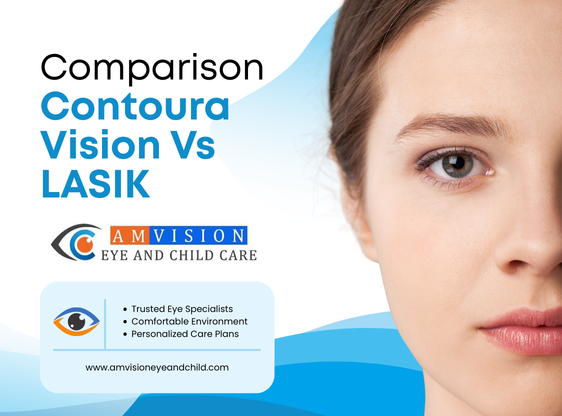Types of InOLs: Monofocal vs. Multifocal
- himanienvision
- Jul 18
- 4 min read
Updated: Jul 26
Helping Delhi Patients Make an Informed Choice for Cataract Surgery
Cataract surgery has evolved significantly. It’s no longer just about removing a cloudy lens—today, it's about replacing it with an intraocular lens (IOL) that not only restores clear vision but also reduces reliance on glasses in many cases. At Amvision Eye and Child in Delhi, we recognize that selecting the appropriate IOL can be daunting. This blog will guide you through the most common types of lenses: monofocal and multifocal. We aim to help you choose the best option for your lifestyle and visual needs.
What Is an Intraocular Lens (IOL)?
An IOL is an artificial lens that your surgeon implants in your eye during cataract surgery. It replaces your eye's natural lens, which has become cloudy due to cataracts. Today's IOLs not only improve vision clarity but can also correct refractive errors like nearsightedness, farsightedness, and astigmatism.
Monofocal IOLs: Simplicity and Sharp Focus
How They Work
Single Focus Distance: Monofocal lenses focus clearly at one distance—either near, intermediate, or far.
Standard Choice: These lenses have been the gold standard for years and remain popular due to their reliability.
Advantages
Sharp, Clear Vision: Provides excellent vision for activities at the chosen focus distance, commonly set for distance, such as driving or watching TV.
Lower Cost: Typically more affordable than premium lenses.
Proven Track Record: Extensive history of safety and effectiveness.
Considerations
Need for Glasses: If set for distance, you may need reading glasses; if set for near, you’ll likely require glasses for distance tasks.
Limited Range: Does not provide multiple focal points, meaning you'll need glasses when switching between tasks like reading, using a computer, or driving.
Multifocal IOLs: Freedom from Glasses
How They Work
Multiple Focal Zones: These lenses feature rings or distinct zones that enable light to focus at various distances, from near to far.
Advanced Design: Incorporates diffractive or refractive technology to allocate light for different focal points.
Advantages
Reduced Dependence on Glasses: Many patients experience clear vision for reading, computer work, and distance with minimal need for spectacles.
Active Lifestyle Friendly: Ideal for those who balance varied tasks—like emails on a tablet, cooking, and driving—without needing constant lens changes.
Considerations
Cost: Multifoal IOLs are generally in the premium lens category, requiring a higher out-of-pocket investment.
Visual Phenomena: Some patients report experiencing glare or halos around lights at night, but most adapt within weeks.
Contrast Sensitivity: There may be a slight reduction in contrast during very low-light conditions, though this typically doesn’t impact daily life significantly.
Which IOL Is Right for You?
The decision between monofocal and multifocal IOLs depends on several factors including your priorities, lifestyle, and budget.
| Factor | Monofocal IOL | Multifocal IOL |
|-------------------------------|-------------------------------|-------------------------------|
| Cost | More affordable | Premium pricing |
| Glasses Use | Required for non-set distances| Minimal use in most cases |
| Night Vision | Consistently sharp | Possible halos/flare |
| Contrast in Low Light | Excellent | Slightly reduced |
| Lifestyle Fit | Mainly one-distance focus | Active, multi-tasking lifestyle|
Ask Yourself
Do you mind wearing reading glasses after surgery?
How important is freedom from spectacles in your daily routine?
Are you comfortable with a higher investment for potentially greater visual independence?
Why Choose Amvision Eye and Child in Delhi?
Experienced Cataract Specialists
Dr. Chirag Mittal, our chief surgeon, has conducted thousands of cataract procedures employing the latest phacoemulsification and femtosecond laser techniques. This ensures precise IOL placement and quick visual recovery.
Personalized Consultations
We dedicate time to understand your daily activities, work requirements, and visual expectations before recommending an IOL type. Each eye is unique, and our tailored approach guarantees the best match.
State‑of‑the‑Art Facilities
Our clinic, located in central Delhi, is equipped with advanced diagnostic tools—OCT, optical biometry, and wavefront aberrometry—to assess your eye parameters with great precision.
Patient‑Centric Care
From clear pricing to post-operative support, our friendly staff assists you throughout the process. We offer flexible appointment options, including weekends, to accommodate your busy schedule.
Financial Options
Understanding that eye care is an important investment, we offer modular payment plans and insurance assistance to help you focus on your vision rather than the financial aspect.
Preparing for Your IOL Consultation
List Your Activities: Note when you currently use glasses—reading, computer work, or driving at night—to assist in guiding your IOL selection.
Bring Your Spectrum: If you wear glasses, bring your current prescription for comparison.
Ask Questions: Inquire about potential out-of-pocket costs, possible visual side effects, and recovery timelines.
Plan Your Recovery: Arrange for someone to drive you home after surgery and schedule a day off for post-operative rest.
Frequently Asked Questions
1. Can I switch from monofocal to multifocal IOLs later?
No, changing an implanted IOL requires additional surgery. It’s best to make your decision during the initial consultation.
2. Are there alternatives to monofocal and multifocal lenses?
Yes, options include toric IOLs for astigmatism correction, extended depth-of-focus (EDOF) lenses for an intermediate range, and accommodative IOLs that aim to mimic natural focusing.
3. What is the typical recovery time?
Most patients can resume light activities within 24 to 48 hours, with full visual stabilization by 4 to 6 weeks.
4. Will my insurance cover IOLs?
Basic monofocal IOLs are often covered. Premium lenses, like multifocal ones, may require an additional payment. Our team will assist with all necessary documentation.
5. How long do IOLs last?
IOLs are designed to be permanent. They will not wear out, fog, or discolor over time.
By understanding your options and consulting with the experts at Amvision Eye and Child, you can make an informed choice about your cataract surgery and IOL selection.



Comments